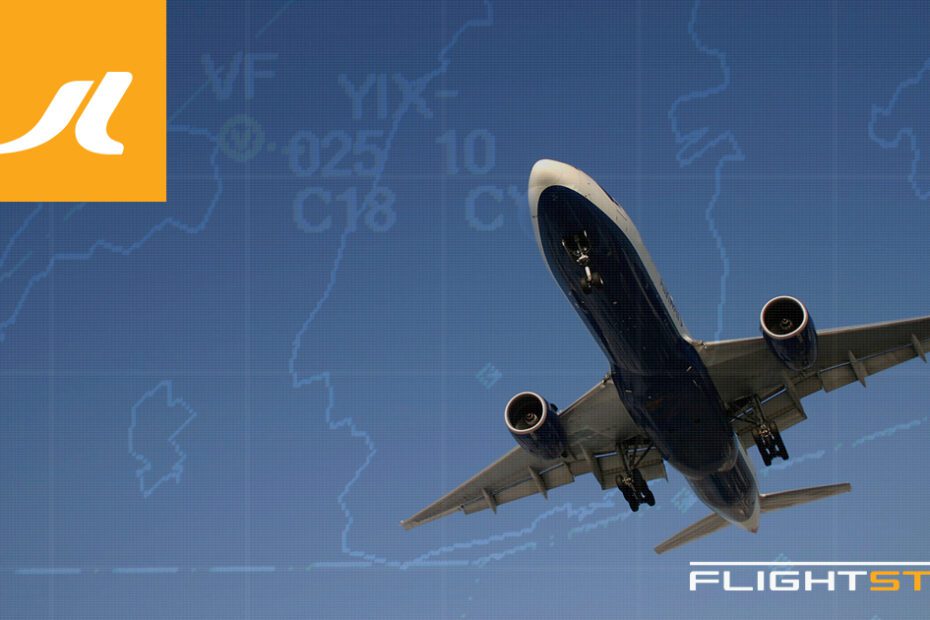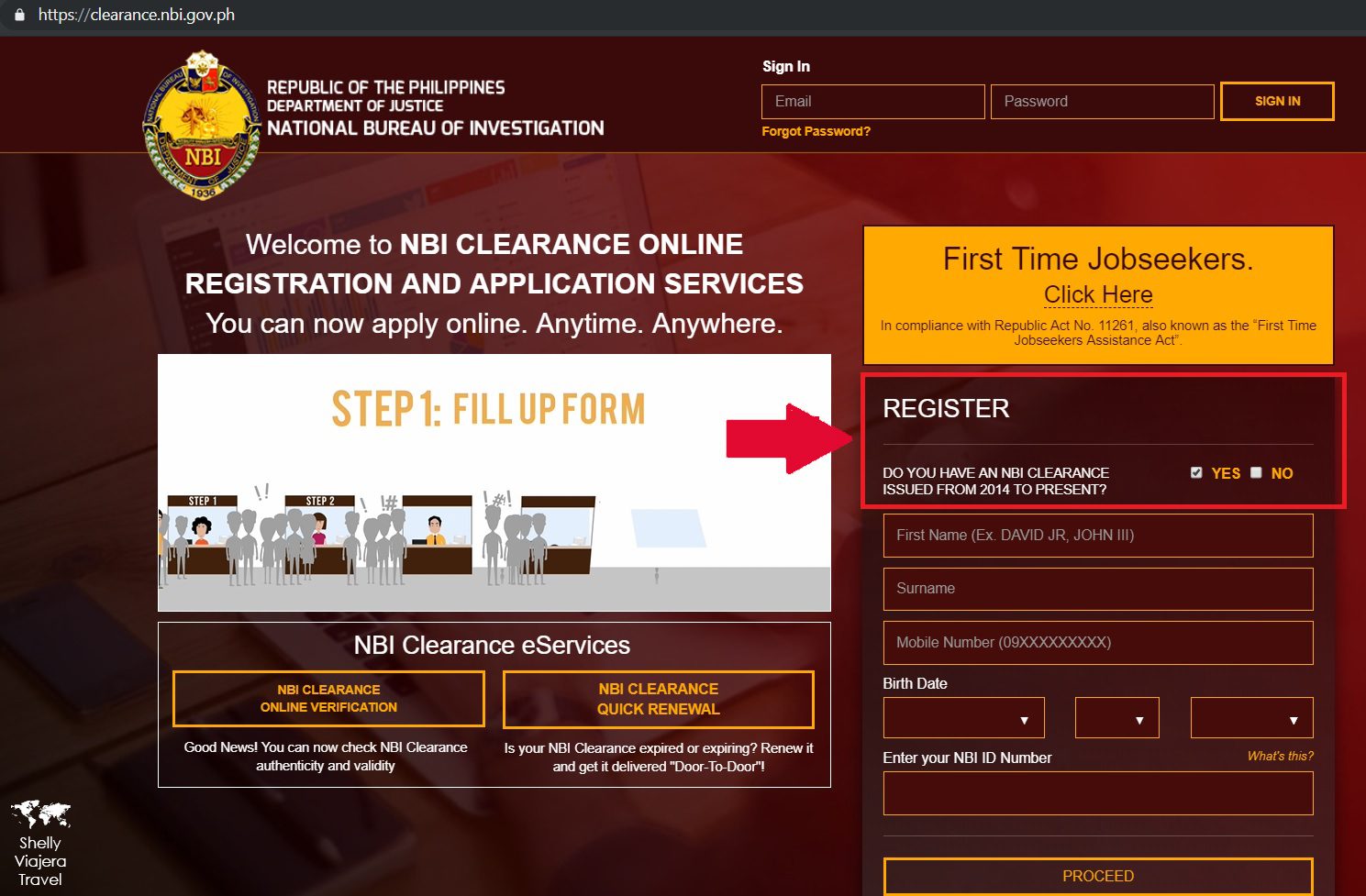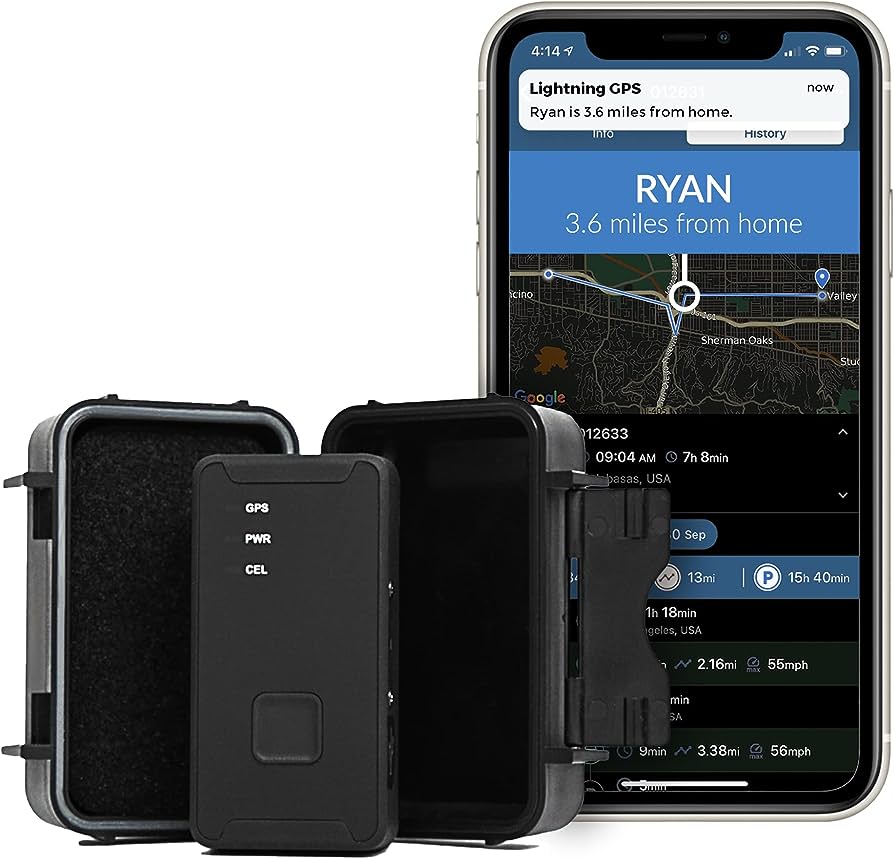To track a flight, simply visit a reliable flight tracking website and enter the flight number or departure and arrival airports. Thereafter, you will be provided with real-time updates on the flight’s status, including departure and arrival times, delays, and any changes.
Air travel has become an integral part of our modern lives, and whether we are jetting off on a well-deserved vacation or anxiously awaiting the arrival of a loved one, tracking a flight’s progress is crucial. Thankfully, it has never been easier to stay informed about the status and location of a flight.
By utilizing online flight tracking tools, passengers can have real-time updates on a flight’s departure and arrival times, gate changes, and even any unexpected delays. We will explore the various methods and resources available to track a flight, ensuring you are always well-informed and prepared for your travels. So let us delve into the world of flight tracking and discover how it can make our air travel experiences smoother and more enjoyable.
Understanding Flight Tracking Systems
Flight tracking systems are essential for keeping track of flights in real-time. Learn how to easily track a flight using these systems and stay updated on departure times, arrival schedules, and any delays or cancellations.
Brief Overview Of Flight Tracking Systems
Flight tracking systems are essential tools that help in monitoring the movement of an aircraft from its departure to its arrival. They provide real-time updates on flight information, such as location, altitude, speed, and estimated arrival time. This enables passengers to stay informed about the progress of their flight and allows airlines and air traffic controllers to maintain efficient operations.
Flight tracking systems utilize a combination of technologies, including GPS, radar, and transponders, to collect and transmit data about the aircraft’s position and other relevant details.
Different Types Of Flight Tracking Systems
There are various types of flight tracking systems available, each with its own features and capabilities. Some of the commonly used systems include:
- Radar-based tracking: This traditional system uses ground-based radar stations to track aircraft using radio waves. It provides accurate and real-time information about an aircraft’s position, speed, and altitude.
- GPS-based tracking: Global Positioning System (GPS) technology has revolutionized flight tracking. GPS receivers on planes collect satellite signals to determine location coordinates, which are then transmitted to ground stations.
- ADS-B tracking: Automatic Dependent Surveillance-Broadcast (ADS-B) is a modern tracking system that relies on aircraft-mounted transponders to transmit real-time data to ground stations and other equipped aircraft. It offers more precise and comprehensive tracking capabilities compared to radar-based systems.
- Satellite-based tracking: Satellite-based tracking systems utilize advanced satellite networks to track aircraft globally, including over remote oceans and regions with limited ground-based infrastructure.
Importance Of Flight Tracking For Passengers
Flight tracking systems offer several benefits to passengers, enhancing their travel experience and providing peace of mind. Some of the key advantages include:
- Real-time updates: Passengers can easily track their flight’s progress, including departure time, current location, and estimated time of arrival. This helps to minimize uncertainty and allows for better planning, such as arranging transportation or notifying loved ones about any delays.
- Emergency preparedness: In case of any emergencies or unforeseen events during a flight, flight tracking systems enable authorities and rescue teams to quickly locate the aircraft and respond promptly.
- Comfort and convenience: Passengers can monitor their flight’s status without the need for constant inquiries or relying solely on airline announcements. This allows for a more relaxed and stress-free travel experience.
- Stay informed: Flight tracking systems provide information on weather conditions along the flight route, allowing passengers to be aware of potential turbulence or delays due to adverse weather. This knowledge helps passengers to mentally prepare and adjust their expectations accordingly.
Flight tracking systems are crucial tools that provide real-time updates on flight information, ensuring passengers are informed about their flight’s progress. With different types of tracking systems available, including radar-based, GPS-based, ADS-B, and satellite-based tracking, passengers can benefit from accurate and comprehensive flight information.
Preparing To Track A Flight
To track a flight, follow these steps: Check the flight status on the airline’s website or using a flight tracker app, enter the flight number and departure/arrival airports, and receive real-time updates on the flight’s location and estimated arrival time.
Researching And Choosing The Right Flight Tracking Tool:
- Utilize credible sources like online forums, review websites, and recommendations from frequent flyers to find reliable flight tracking tools.
- Look for features such as real-time updates, accurate flight information, and user-friendly interfaces.
- Consider the compatibility of the tracking tool with your device (e.g., mobile app, web-based tool).
- Check for additional features like flight status notifications, airport maps, and weather information for a comprehensive tracking experience.
Understanding The Information Required To Track A Flight:
- Familiarize yourself with the essential flight details needed for tracking, such as the flight number, airline carrier, and departure/arrival airports.
- Make sure you have the correct date and time of the flight to avoid tracking the wrong one.
- Understand that some flight tracking tools may require additional information, like the aircraft registration number or the departure gate code.
Gathering The Necessary Flight Details:
- Start by obtaining the flight number from your airline ticket or confirmation email.
- Ensure you have the correct spelling and format of the flight number as it varies between airlines.
- Note down the airline carrier associated with the flight number.
- Find out the departure and arrival airports for your flight.
- Double-check the date and time of the flight to avoid any errors.
Remember, by researching and selecting the right flight tracking tool, understanding the required information, and gathering the necessary flight details, you’ll be well-prepared to track your flight accurately and conveniently.
Tracking A Flight In Real-Time
Discover how to track a flight in real-time using intuitive online tools. Stay updated with accurate information about departures, arrivals, delays, and even aircraft positions, making your travel experience smoother than ever before.
Exploring Real-Time Flight Tracking Options:
Real-time flight tracking allows you to stay updated on the whereabouts of a flight at any given time. Whether you’re a frequent flyer trying to keep track of your loved ones or simply curious about the status of a flight, there are several options available to you.
Here are some ways you can track a flight in real-time:
- Flight tracking websites: There are various flight tracking websites that provide real-time data on flights. These websites often provide information such as the flight’s departure and arrival times, current location, altitude, and speed. Some popular flight tracking websites include FlightAware, FlightRadar24, and FlightStats.
- Flight tracking apps: Mobile apps have revolutionized the way we access information, and flight tracking is no exception. Many airlines have their own apps that allow you to track flights in real-time. Additionally, there are standalone flight tracking apps that provide comprehensive flight information. Examples of popular flight tracking apps include Flighty, Flightradar24, and FlightStats.
- Airline websites: Most airlines have their own websites that offer flight tracking services. These websites usually require you to input the flight number or origin and destination details to track the flight in real-time. While the information provided may not be as detailed as that found on dedicated flight tracking websites, it can still give you a general idea of the flight’s progress.
Using Flight Tracking Websites And Apps:
When it comes to tracking flights in real-time, using flight tracking websites and apps can make the process seamless and convenient. Here are some advantages of using these platforms:
- Access to comprehensive flight information: Flight tracking websites and apps provide detailed information about flights, including their current location, altitude, speed, and estimated arrival time. This can help you plan your schedule accordingly and stay informed about any delays or changes.
- Interactive maps and visuals: Many flight tracking platforms offer interactive maps that allow you to visualize a flight’s path. This can be especially helpful if you want to understand the flight’s route or if you’re simply interested in exploring flights around the world.
- Notifications and alerts: Flight tracking websites and apps often offer notification features that alert you of any changes to a flight’s status. You can receive notifications for departure or arrival times, delays, gate changes, and more. This ensures that you never miss any important updates regarding the flight you’re tracking.
- User-friendly interfaces: Flight tracking platforms are designed to be user-friendly, with intuitive interfaces that make it easy to search for and track flights. These platforms are typically accessible on both desktop and mobile devices, allowing you to track flights anytime, anywhere.
Understanding The Information Displayed On A Flight Tracker:
When using a flight tracker, it’s important to understand the information displayed to get the most out of the tracking experience. Here’s what you should look out for:
- Flight number: Each flight is assigned a unique flight number, which allows you to identify and track a specific flight.
- Origin and destination: The flight tracker will provide the departure and arrival airports for the flight you’re tracking. This information helps you keep track of the flight’s progress and estimated time of arrival.
- Flight status: The flight tracker will display the current status of the flight, indicating whether it’s on time, delayed, cancelled, or diverted.
- Flight path: Most flight trackers show the flight’s path on a map, allowing you to see its route and follow along in real-time.
- Altitude and speed: The flight’s altitude and ground speed are often provided, giving you an idea of how the flight is progressing.
- Arrival and departure times: The flight tracker will show the scheduled departure and arrival times, as well as any changes or updates that occur.
By familiarizing yourself with these key elements, you’ll be able to make the most of your flight tracking experience and stay informed about the status and progress of the flight you’re interested in.
Tracking A Flight After Takeoff
Learn how to track a flight after takeoff with these simple steps. Stay updated on the flight’s location and arrival time using online flight tracking services or airline apps. Track your loved ones’ journey or stay informed about your own travel plans easily.
After a flight takes off, it’s essential to monitor its progress and stay updated on any changes or notifications. Tracking a flight during its journey can provide valuable information, give you peace of mind, and help you plan your travels efficiently.
In this section, we will explore how to monitor flight progress, understand the different stages of a flight, and interpret flight updates and notifications.
Monitoring Flight Progress During The Journey:
- Flight tracking apps and websites: Utilize flight tracking platforms like FlightAware, FlightRadar24, or airline-specific apps to monitor flight progress in real-time.
- Flight status updates: Subscribe to email or text notifications from the airline or use mobile apps for instant updates on flight departure, arrival, and delays.
- Airport monitors and information boards: Check airport monitors to track flight status and gate information.
- Airline customer service: Contact the airline’s customer service for details on flight progress or any changes.
Understanding The Different Stages Of A Flight:
- Boarding: Passengers are allowed to enter the plane and find their seats.
- Taxiing: The aircraft moves from the gate to the runway.
- Takeoff: The plane accelerates on the runway, lifts off, and starts its ascent.
- Climb: The aircraft continues ascending to reach its cruising altitude.
- Cruise: The plane maintains a constant altitude and speed for the majority of the flight.
- Descent: The aircraft begins descending to prepare for landing.
- Approach and Landing: The plane nears the destination, descends further, and lands at the designated airport.
Interpreting Flight Updates And Notifications:
- Departure and arrival times: Keep track of any changes in departure or arrival times and adjust your plans accordingly.
- Gate changes: Be aware of gate changes, especially if you have connecting flights, to avoid confusion and ensure a smooth transition.
- Delays and cancellations: Stay informed about any delays or cancellations to make alternative arrangements if necessary.
- Weather conditions: Understand that weather conditions may affect flight schedules, so keep an eye on weather-related updates.
- Baggage claim information: Be aware of the designated baggage claim area at your destination airport for easy retrieval of your luggage.
By monitoring flight progress, understanding the stages of a flight, and interpreting flight updates and notifications, you can stay informed and prepared throughout your journey. Whether you’re a frequent traveler or have loved ones flying, tracking flights after takeoff ensures a smoother and stress-free travel experience.
Troubleshooting Flight Tracking Issues
If you’re experiencing issues with flight tracking, learn how to troubleshoot them effectively and track your flight smoothly. Discover helpful tips and techniques in this informative guide.
Tracking flights can be an efficient way to stay updated on your travel plans or keep tabs on a loved one’s journey. However, there may be instances where you encounter challenges while monitoring a flight. Don’t worry, we’ve got you covered! In this section, we’ll discuss some common issues faced when tracking flights and provide valuable tips to help you troubleshoot these problems.
Additionally, we’ll explore alternative methods to obtain flight information. So, let’s dive in and resolve these tracking issues together!
Common Challenges Faced While Tracking Flights:
- Flight Not Found: Sometimes, you may come across situations where you are unable to locate the flight you are trying to track. Here are a few reasons this could happen:
- Incorrect Flight Number: Ensure you have entered the correct flight number, as even a small error can result in a failed search. Double-check the flight details.
- Delayed or Cancelled Flight: If the flight has been delayed or cancelled, it may not appear in the tracking system until a new departure time is scheduled. Stay patient and try again later.
- Private or Charter Flights: Certain private or charter flights may not be available for public tracking due to privacy concerns. In such cases, consider contacting the airline directly for information.
- Lack of Real-time Updates: While tracking a flight, you may notice that the information isn’t updating as frequently as expected. Here are two possible reasons for this:
- Flight Data Not Available: In some instances, airlines may not provide real-time flight data to third-party tracking services. This could result in delayed or infrequent updates. Try checking the official airline website or app for the most reliable information.
- Technical Glitches: Occasionally, technical issues can occur with airline systems or tracking services, causing delays in updates. Patience is key, and it’s worth checking back later to see if the issue has been resolved.
Tips For Resolving Tracking Issues:
- Verify Flight Information: Double-check the accuracy of the flight number, departure date, and destination. Even a slight error can lead to tracking difficulties.
- Use Alternative Tracking Platforms: If you’re encountering problems with a particular flight tracking website or app, consider trying a different platform. There are several reliable options available, each with unique features and data sources.
- Check Official Airline Websites: Airlines often provide real-time updates on their official websites or mobile apps. If you’re experiencing issues with third-party tracking services, directly accessing the airline’s system may provide more accurate information.
- Contact the Airline: If all else fails, reach out to the airline’s customer support for assistance. They can provide you with the most up-to-date information regarding the flight you wish to track.
Alternative Methods For Obtaining Flight Information:
- Flight Status Notifications: Some airlines offer flight status notifications via email, SMS, or mobile app push notifications. Sign up for these services to receive regular updates directly to your preferred communication channel.
- Airline Customer Service: Contacting the airline’s customer service team can be a reliable method to obtain accurate flight information. They have access to the latest updates and can assist with any queries or concerns.
- Airport Information Displays: If you’re near the airport, checking the information displays can provide you with real-time flight details, including departure/arrival times and gates.
- Flight Radar Apps: Consider using flight radar apps that use real-time data from aircraft transponders, providing you with updated flight paths, altitudes, and estimated arrival times.
By following these troubleshooting tips and exploring alternative methods, you’ll be well-equipped to overcome any flight tracking issues you encounter. Happy tracking!
Enhancing Flight Tracking Experience
Enhance your flight tracking experience with our simple and efficient methods to track a flight. Stay updated on departure and arrival times effortlessly with our user-friendly tools.
If you’re someone who frequently travels by air or has loved ones who do, then you understand the importance of staying informed about flight statuses. Fortunately, tracking flights has become easier than ever with the help of advanced technology and innovative flight tracking tools.
In this section, we will explore some effective ways to enhance your flight tracking experience and make the process more personalized and efficient. Let’s dive in!
Customizing Flight Tracking Preferences
Customizing your flight tracking preferences allows you to tailor the information you receive and stay updated on the aspects that matter most to you. Here are some ways you can personalize your flight tracking experience:
- Selecting preferred notifications: Choose the specific updates you want to receive, such as departure and arrival times, gate changes, delays, or cancellations. This way, you stay informed about the information that is most relevant to your travel plans.
- Adding multiple flights: If you have a flight connection or are tracking flights for multiple individuals, you can add multiple flights to your tracking list. This saves you the hassle of searching for each flight separately and provides a comprehensive view of all the relevant information in one place.
- Filtering by airline: By customizing your tracking preferences, you can filter the flights based on the airlines you frequently travel with or prefer. This helps you focus on the information that matters to you most and reduces unnecessary clutter.
- Setting up reminders: If you want to ensure you don’t miss any important flight updates, you can set up reminders to receive notifications at specific intervals before departure or arrival times. This feature is particularly useful if you are tracking flights for someone else or have connecting flights.
Leveraging Additional Features Offered By Flight Tracking Tools
Flight tracking tools often come with a range of additional features that can further enhance your tracking experience. Here are some notable features that you can leverage:
- Real-time flight updates: Many flight tracking tools provide real-time updates, allowing you to monitor flight statuses and any changes as they happen. You can access live data on flight locations, altitude, speed, and estimated time of arrival. This feature is incredibly helpful for tracking loved ones’ flights or if you need to make last-minute adjustments to your travel plans.
- Weather information: Some flight tracking tools integrate weather information into their platforms. This enables you to stay informed about weather conditions at departure and arrival airports, which can be crucial for understanding potential delays or disruptions.
- Seat maps and airport information: Some tools offer seat maps, allowing you to select specific seats or check the availability of seat upgrades. Additionally, you can access airport information, including terminal maps, amenities, and transportation options. These features can make your travel experience more convenient and enjoyable.
Integrating Flight Tracking With Other Travel Apps Or Services
To further streamline your travel experience, consider integrating your flight tracking with other travel apps or services. Here are some examples:
- Travel itinerary management: Many travel planning apps or services allow you to create and manage your travel itineraries. By integrating flight tracking with these platforms, you can have all your travel-related information in one place, making it easier to stay organized and informed.
- Hotel and car rental reservations: Some flight tracking tools offer the option to connect your hotel and car rental reservations. This integration enables you to have a comprehensive view of your travel plans, including flight details, accommodation, and transportation, all at your fingertips.
- Trip sharing and coordination: If you are traveling with others, certain apps allow you to share your trip details and coordinate your plans. This can be particularly useful for group travel or family vacations, ensuring everyone stays on the same page throughout the journey.
By customizing your flight tracking preferences, leveraging additional features, and integrating with other travel apps or services, you can significantly enhance your flight tracking experience. Take advantage of the technological advancements available today to stay informed, maximize convenience, and make your air travels smoother than ever before!
Staying Informed With Flight Alerts
Staying informed with flight alerts is crucial in tracking a flight’s status. Easily track your flight and receive real-time updates for any delays, cancellations, or gate changes to ensure a smooth travel experience.
Setting up flight alerts for specific flights:
- Stay updated on the status of your flight by setting up flight alerts.
- Receive real-time notifications about your flight’s departure time, gate changes, and more.
- Ensure you never miss important updates by following these steps:
- Visit the airline’s website or download their mobile app.
- Create an account or log in if you already have one.
- Navigate to the “Manage My Booking” or “Flight Notifications” section.
- Enter your flight details, including the flight number, departure date, and destination.
- Choose your preferred method of receiving alerts, such as email, SMS, or push notifications.
- Save your preferences and activate your flight alerts.
Receiving notifications for flight delays and changes:
- Stay informed about any delays or changes to your flight schedule.
- Be proactive by enabling notifications for flight delays and changes.
- Here’s how you can receive timely notifications:
- Opt for text message alerts from the airline.
- Subscribe to email notifications for flight updates.
- Download a flight tracking app that provides real-time updates.
- Keep your phone handy to stay promptly informed.
Taking proactive measures based on flight alerts:
- Flight alerts can empower you to take proactive measures.
- Make the most of this information by:
- Checking your flight status before leaving for the airport.
- Adjusting your travel plans if there are significant delays or changes.
- Identifying alternative flights or airlines in case of cancellations.
- Contacting the airline’s customer service for assistance, if needed.
- Adjusting ground transportation arrangements based on the flight status.
Make your journey stress-free by staying informed with flight alerts. Setting them up for your specific flights ensures you’re prepared for any potential delays or changes. Keep an eye on your notifications, and take proactive measures to ensure a smooth travel experience.
Flight Tracking Best Practices
Tracking a flight effectively requires following best practices that ensure accurate and up-to-date information. By utilizing reliable flight tracking tools and staying updated with real-time data, travelers can easily track their flights and stay informed about any delays or changes in their itinerary.
Tracking a flight is a crucial aspect of travel planning. With the abundance of flight information available online, it’s important to use flight tracking best practices to ensure accurate and efficient tracking. Here are some tips to help you make the most of your flight tracking experience:
- Use reputable flight tracking websites or apps: Choose reliable sources that retrieve real-time data directly from airlines and airports. This ensures accurate information and minimizes the risk of delayed or outdated data.
- Input correct flight details: Double-check the flight number, departure and arrival airports, and date before beginning your tracking. Incorrect information can lead to tracking the wrong flight or missing essential updates.
- Set up flight alerts: To stay informed about any changes to your flight, take advantage of flight alert services offered by some tracking platforms. These alerts can help you stay updated on delays, cancellations, gate changes, or even the arrival baggage carousel information.
- Monitor departure and arrival times: Flight tracking isn’t just about knowing whether a flight is on schedule, but also keeping an eye on any changes to departure or arrival times. This information can help you plan your travel logistics better and avoid unnecessary waiting time at the airport.
- Utilize flight status notifications: Some flight tracking tools allow you to receive real-time flight status notifications via email, text messages, or push notifications. These updates can be invaluable, especially if you’re meeting someone at the airport or coordinating ground transportation.
Keeping track of multiple flights simultaneously:
Tracking multiple flights can be daunting, but with the right approach, it can be manageable. Here are a few tips to help you keep track of multiple flights simultaneously:
- Use a flight tracking app with multi-flight support: Some tracking apps enable you to add and monitor multiple flights on a single interface. This feature allows you to easily switch between flights, view their details, and receive updates all in one place.
- Organize flight information: Create a personalized system to organize flight details for various trips. Keep track of flight numbers, departure and arrival times, and any connecting flights. Using a spreadsheet or a note-taking app can help you stay organized and avoid confusion.
- Set individual flight alerts: When tracking multiple flights, it’s essential to set up alerts for each flight separately. This way, you’ll receive specific notifications for each flight’s status changes, ensuring that you don’t miss any important updates.
Leveraging flight tracking for travel planning and logistics:
Flight tracking goes beyond just knowing whether a flight is delayed or on time. It can be a valuable tool for travel planning and logistics. Here’s how you can leverage flight tracking to enhance your travel experience:
- Predict potential delays: By monitoring historical data and real-time flight status, you can identify patterns and predict potential delays. This knowledge allows you to plan ahead, adjust your schedule, and minimize the impact of unexpected changes.
- Optimize layovers and connections: Flight tracking helps you identify the status of connecting flights and gauge the time you have for layovers. If a connecting flight is delayed, you can make necessary arrangements in advance, such as rebooking or requesting assistance at the airport.
- Stay informed about gate changes: Gate changes can occur unexpectedly, and tracking your flights can provide timely information. Being aware of gate changes allows you to allocate sufficient time to reach the new gate, avoiding the stress of last-minute rushes.
- Plan ground transportation: Flight tracking provides accurate arrival times, allowing you to plan your ground transportation accordingly. Whether you’re utilizing public transportation, arranging for a pick-up, or booking a rental car, knowing the arrival time is crucial for seamless travel logistics.
Flight tracking offers a multitude of benefits, from ensuring timely arrivals to facilitating efficient travel planning. By following these flight tracking best practices and utilizing the available tools, you can enhance your travel experience and navigate through any potential disruptions with ease.

Credit: www.theweek.co.uk
Frequently Asked Questions For How To Track A Flight
How Can I Track My Actual Flight?
To track your flight, visit the airline’s website and enter your flight number to get real-time updates.
Which Flight Tracker Is Free?
FlightAware is a free flight tracker that provides accurate and real-time tracking information.
How Can I Track A Plane By Number?
To track a plane by number, you can use flight tracking websites or mobile apps.
How Can I Track A Flight In Real-Time?
Tracking a flight in real-time is easy! Simply head to a reputable flight tracking website or use a flight tracker app on your smartphone. Enter the flight number, and you’ll be able to see the flight’s status, current location, and estimated arrival time.
Conclusion
In a nutshell, tracking a flight has become an essential part of travel planning. Whether you’re a frequent flyer or just planning a vacation, having the ability to track your flight can provide peace of mind and save you from unnecessary stress.
By utilizing online tools and resources, you can easily monitor your flight’s schedule, status, and any potential delays or cancellations. These tools enable you to stay informed and make necessary adjustments to your travel plans, ensuring a smooth and hassle-free journey.
Additionally, tracking a flight allows you to stay updated on the current weather conditions at your destination, so you can be prepared and plan accordingly. Remember to use reputable websites and applications that offer real-time flight tracking information, and always double-check with the airline for the most accurate and up-to-date details.
So, whether you’re jetting off for a business trip or an exciting adventure, tracking your flight is a must for a stress-free travel experience.
- What Is the 11 Hour Limit: A Comprehensive Guide - June 7, 2024
- What Happens if You Drive on a Suspended License in Virginia - June 7, 2024
- Wilcox Justice Court Overview: Online Services & Legal Proceedings - June 6, 2024




